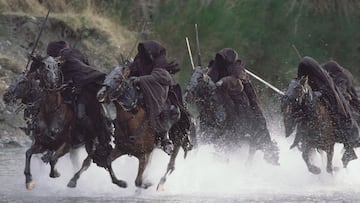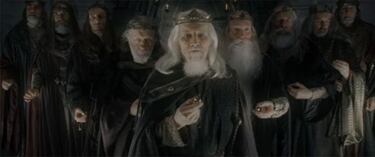The road to The Rings of Power: who are the Nazgul from The Lord of the Rings?
The nine were once powerful men, but with the corruption of the rings, they became servants of Sauron since the Second Age of Middle-earth.

Prime Video's The Rings of Power series is a prequel to J.R.R. Tolkien's The Lord of the Rings. Based on the work of the professor, this production is set during the Second Age, that is, a period of relative peace. And we use the word 'relative' advisedly since something is brewing in Middle-earth. Not surprisingly, this was the time when the dark lord Sauron rose to take full control of the power of the rings. The Nazgul, also known as the Ringwraiths, were not always beings bound to darkness.
It all begins with the forging of the rings of power. Celebrimbor, of the house Fëanor (the same family that maintains a hard dispute with Galadriel), ruled Eregion in the Second Age. This prince was the creator of the three rings that the elves received, Vilya, Nenya and Narya. However, he also forged other rings that ended up in the hands of Sauron. With everything ready to dominate the world, he made the One Ring, destined to dominate all the others. Nine were given to men, all of them monarchs of different territories.

Corruption of the rings: from kings to slaves
Blinded by ambition, money and fame, the bond of the One became tighter, gradually corrupting the nine. Over time, the sovereigns ended up becoming mere slaves of the dark lord, specters of the ring capable of detecting anyone who wore it on their fingers. Without realizing it, they were forever bound to Sauron's influence, so when he disappeared, so did the Nine.
J.R.R. Tolkien never named any of these kings nor the Nazgul, with the exception of the Witch-King of Angmar and Khamûl, the latter Sauron's lieutenant in the Third Age and (very briefly) Lord of the Nazgul. All of them disappeared without a trace when their lord was defeated after Men and Elves allied in battle. Unfortunately, Isildur, King of Arnor and Gondor, was unable to destroy the One Ring on Mount Doom. He decided to keep it for himself, and he too was corrupted by its twisted power.

Related stories
Sauron and the Nazgul managed to survive, for their fates were irretrievably linked to that of the One Ring, even if they lost their spectral forms. However, when the demonic jewel passed from Gollum's hands to Bilbo's, its return was more than guaranteed. The rest we see in The Lord of the Rings, when the hobbit Frodo Baggins joins the Fellowship and succeeds where Isildur failed. With the One Ring destroyed, the spirits of the Nazgul evaporated with that of their master.
The Lord of the Rings: The Rings of Power premieres September 2nd on Prime Video. Will we see how the human kings slowly become corrupted into Nazgul, the nine servants of Sauron and the One?
